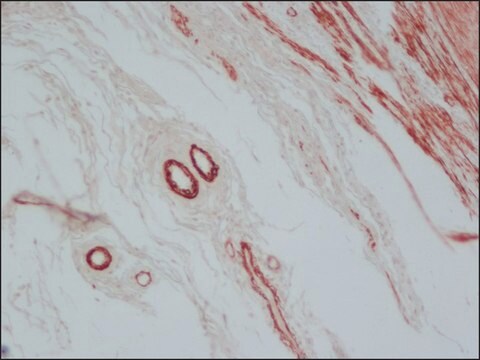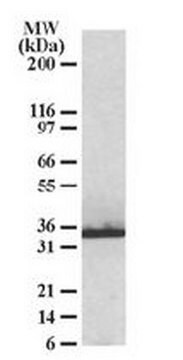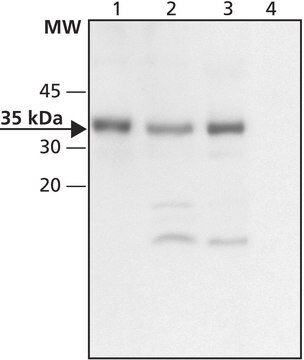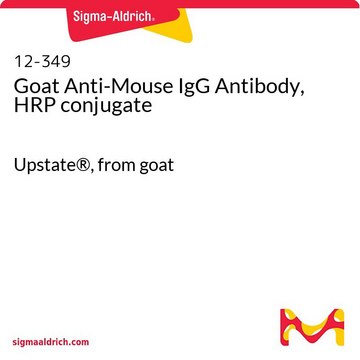S1073
Anti-STUB1/CHIP antibody, mouse monoclonal
clone ST21.55, purified from hybridoma cell culture
同義詞:
Anti-C terminus of HSC70-interacting protein (CHIP), Anti-HSPABP2, Anti-Heat shock protein A binding protein 2 (c-terminal), Anti-NY-CO-7, Anti-SDCCAG7, Anti-STIP1 homologous and box-containing protein 1 (STUB1), Anti-Serologically defined colon cancer antigen 7, Anti-UBOX1
About This Item
推薦產品
生物源
mouse
共軛
unconjugated
抗體表格
purified from hybridoma cell culture
抗體產品種類
primary antibodies
無性繁殖
ST21.55, monoclonal
形狀
buffered aqueous solution
分子量
antigen ~35 kDa
物種活性
rat, human, bovine
濃度
~1.0 mg/mL
技術
indirect ELISA: suitable
western blot: 2.5-5 μg/mL using HeLa total cell extract.
同型
IgG2b
UniProt登錄號
運輸包裝
dry ice
儲存溫度
−20°C
目標翻譯後修改
unmodified
基因資訊
bovine ... STUB1(504565)
human ... STUB1(10273)
mouse ... Stub1(56424)
rat ... Stub1(287155)
一般說明
免疫原
應用
生化/生理作用
外觀
免責聲明
未找到適合的產品?
試用我們的產品選擇工具.
儲存類別代碼
10 - Combustible liquids
水污染物質分類(WGK)
WGK 1
閃點(°F)
Not applicable
閃點(°C)
Not applicable
個人防護裝備
Eyeshields, Gloves, multi-purpose combination respirator cartridge (US)
分析證明 (COA)
輸入產品批次/批號來搜索 分析證明 (COA)。在產品’s標籤上找到批次和批號,寫有 ‘Lot’或‘Batch’.。
我們的科學家團隊在所有研究領域都有豐富的經驗,包括生命科學、材料科學、化學合成、色譜、分析等.
聯絡技術服務








